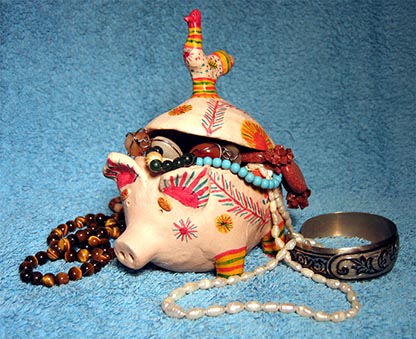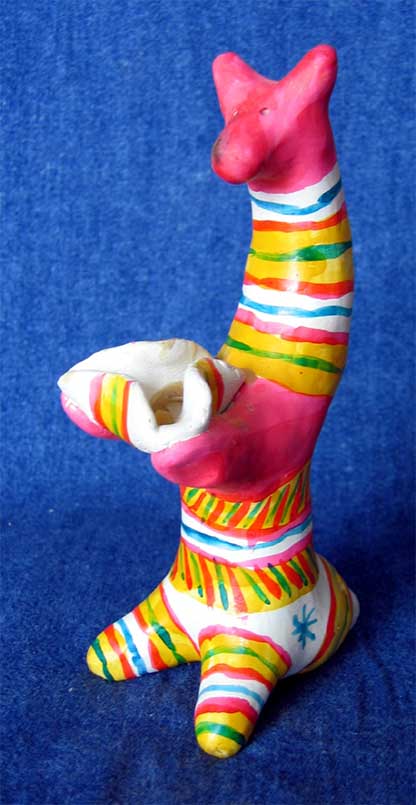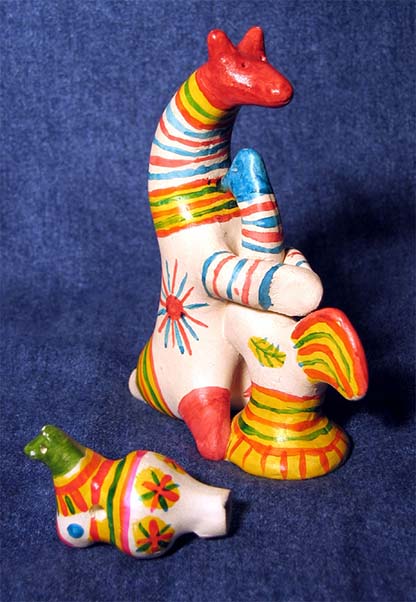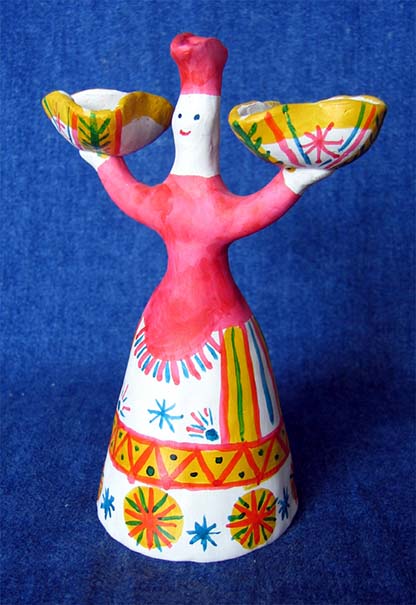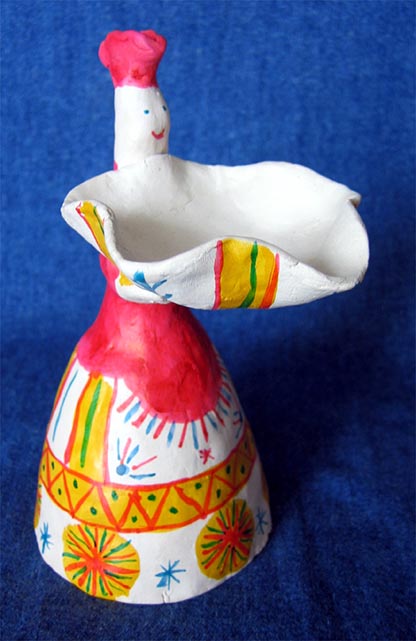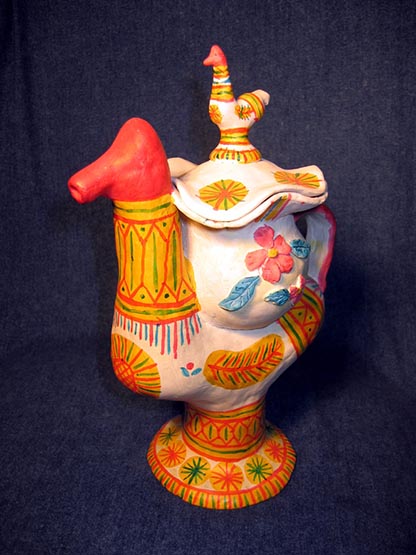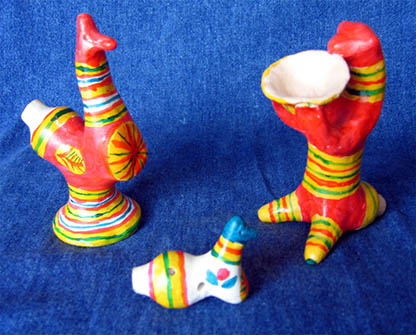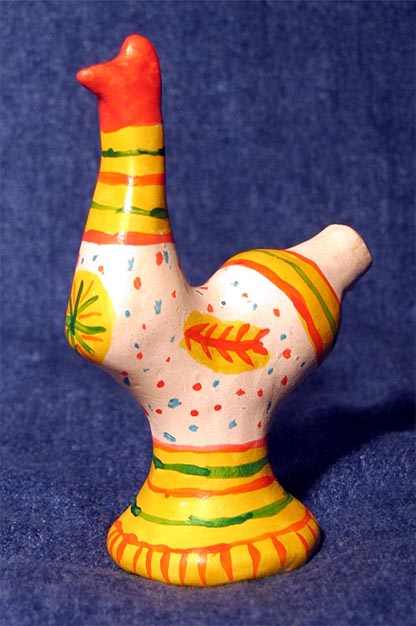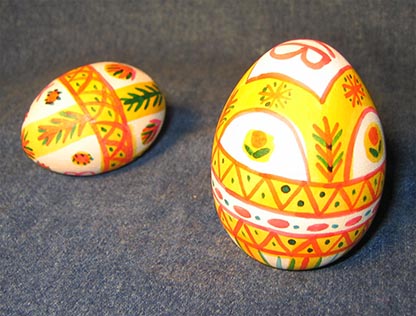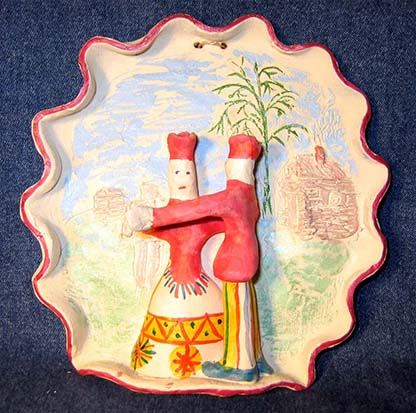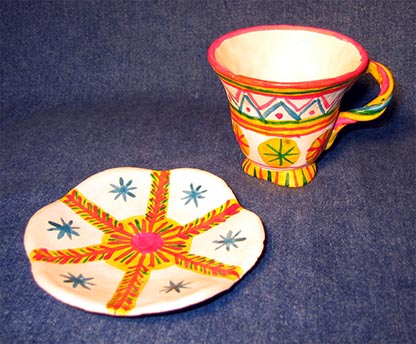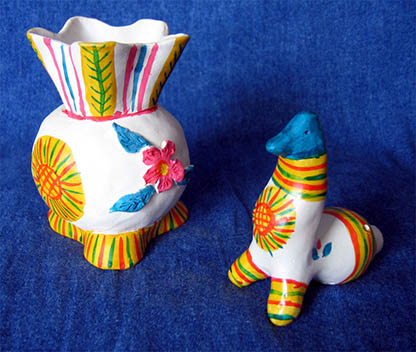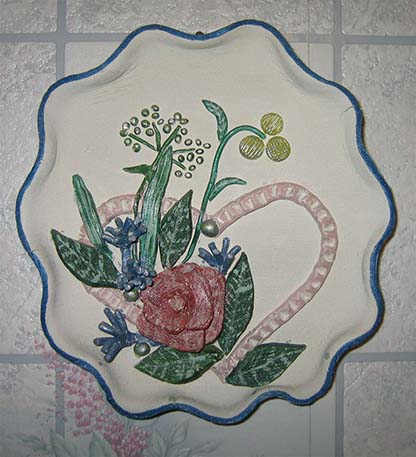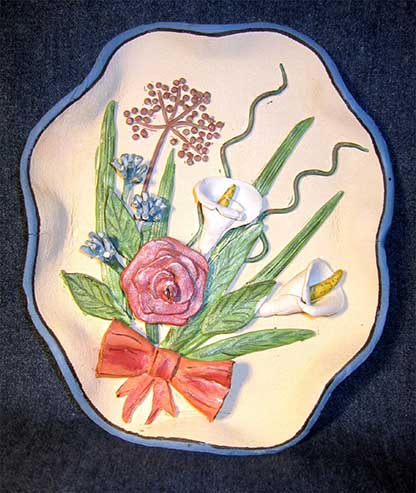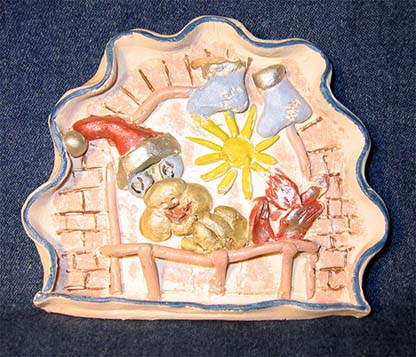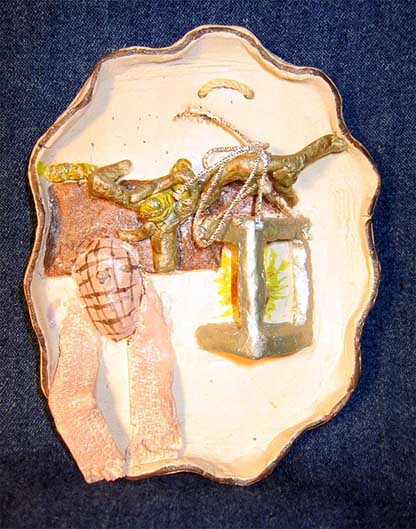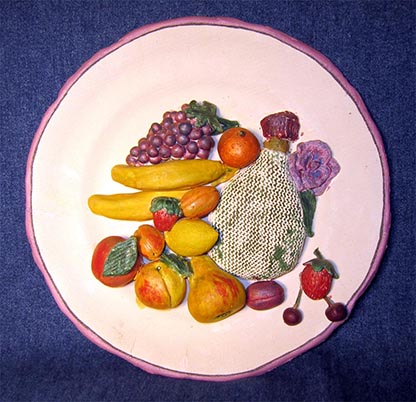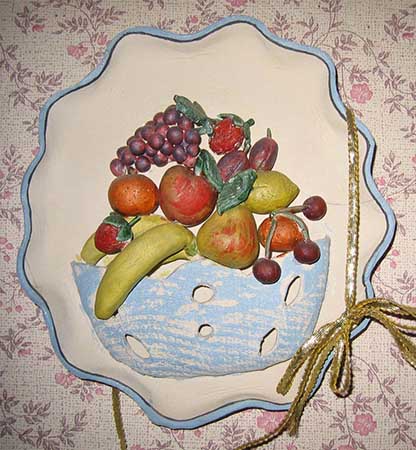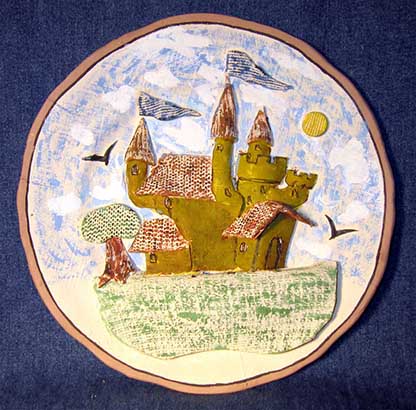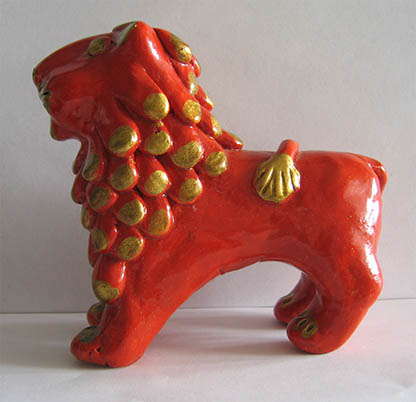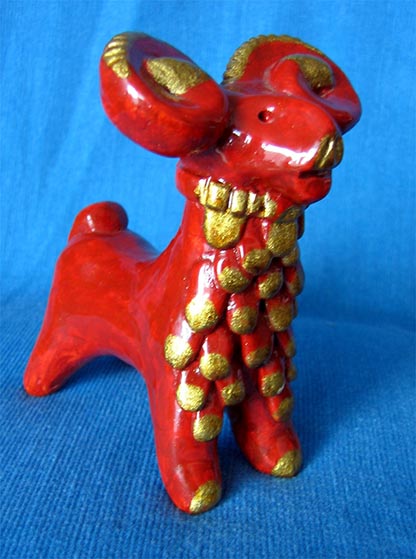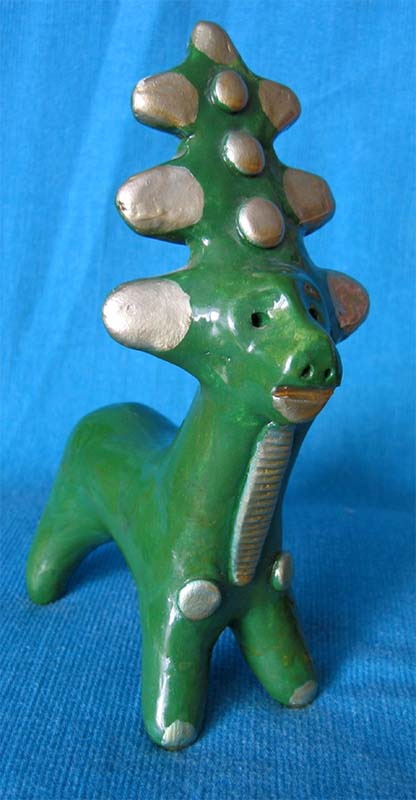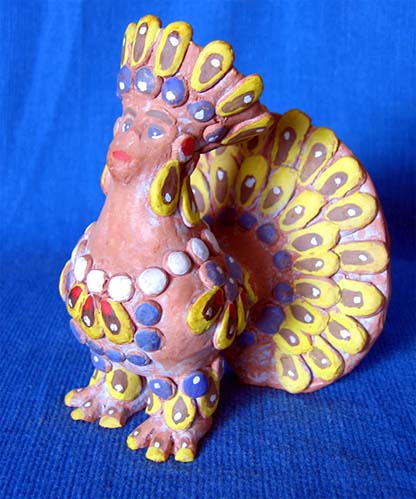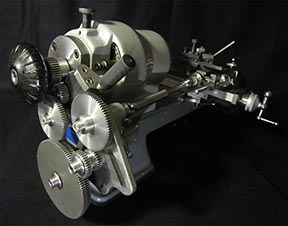Filimonovo toy

Filimonov's toy is a Russian folklore art craft. The toy received its name from the village of Filimonov located near Odoyevo of the Tula region. Here, long ago (perhaps about seven hundred years ago) peasants began to make from a special kind of the local clay the dishes and the whistles. And the first, according to legend,was Philemon, who discovered in this place excellent in quality, greasy and plastic clay and began to make pots of it.
The potters were usually men, and women made whistles. They were helped by girls, who were taught to the craft from 7-8 years. In the winter evenings the craftswomen gathered and under the songs made toys. And in the spring before the field work began, these products were burned in the special horns. The furnace was built of bricks, in which the dishes were laid in dense rows, and the voids between the pots were filled with whistles. They closed everything with tiles, covered with birch firewood and set fire to it. For the whole village this was a solemn event. Until the dead of night these huge bonfires burned. According to eyewitnesses, the roasting was an unusually colorful spectacle. Near the stoves gathered goodly dressed men, women, children in anticipation of the miraculous completion of all winter works.
To create a toy, a lump of clay is taken, from which the is draw the entire figure at once - with this method of sculpting the toys are obtained graceful, plastic. In the cross section, all parts of the body must be round.
After burning, the "synica" (blue) (the clay here is called for its color) becomes white, and you can immediately paint a toy. First, yellow stripes and spots are layed, then they are outlined with a red "feather", then green, less often blue or purple. The painting is built according to the traditional scheme: color strips alternate with the local spots. There are also more complex patterns, especially on the skirts of ladies: branched "Christmas tree", bright "berry", radiant "star", or "sun" intertwine in joyful patterned inflorescences. The blouses for ladies and the shirts for soldiers are usually painted in one color (crimson, green, yellow). The circle denotes the sun, the triangle - the earth, the fir-trees and the sprouts - a symbol of vegetation and life. All these tracerys recall the connections between man and nature.
For painting are use chicken and goose feathers. Initially, aniline paints diluted on an egg, and the painting had juicy natural tones, but, unfortunately, it quickly faded and tarnished. Then the masters began to use acetone - the paint became more durable, although the tones lost a bit in naturalness.
The heroes and plots of Filimonov's toys are traditional: they are ladies, peasant women, soldiers, dancing couples, equestrians on horses; from animals are cows, sheep, horses, bears; from birds are chicken, roosters and much more. All Filimonov toys are whistles, even ladies and gentlemen. The whistle is always in the tail of the beasts and birds wich they hold.
Works of the period of study in the art school in Novomoskovsk (Russia).

